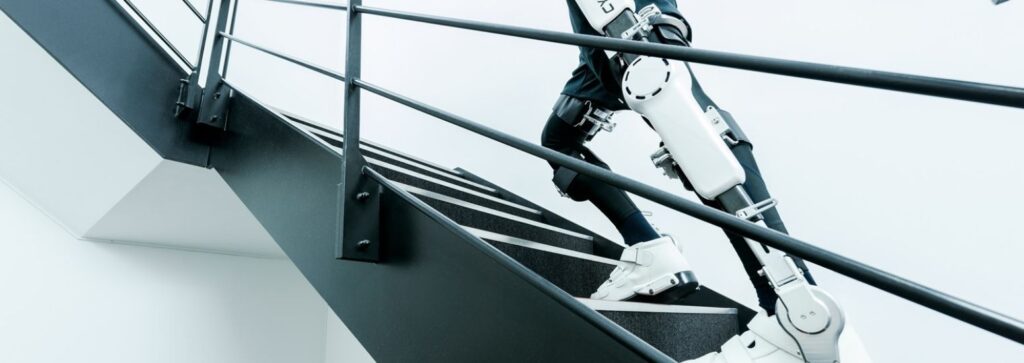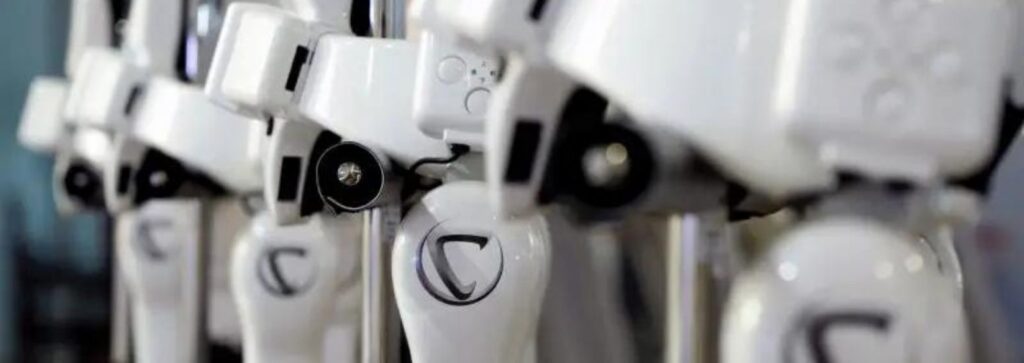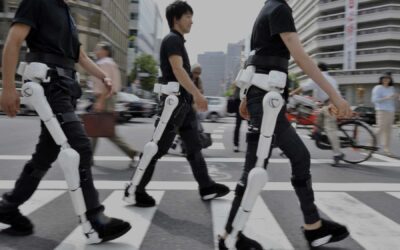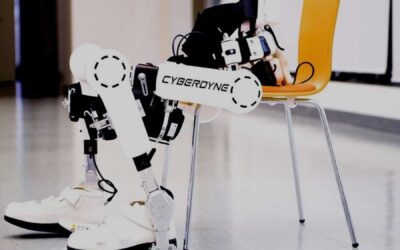HALs (Hybrid Assistive Limbs) from Cyberdyne Type of Lumbar One technology that might be used for two purposes is well-being. Both caregivers and those receiving care can use the gadget. When a “caregiver” uses it, the risk of back injury is decreased and less stress is placed on the lumbar area during care movements. When applied by “care-receivers,” it may aid someone who has weak legs preserve and enhance their bodily functions.
Characteristics of Cyberdyne HAL®

Patients with increasing intractable neuromuscular illness, spinal cord injuries, cerebrovascular disease, and other lumbar disorders can be treated with the Wearable Cyborg™ HAL®, a neuronally controlled cyborg.
A neuromuscular feedback therapy tool is the neuronally controlled Hal® robot suit. The lumbar problems patient’s muscle receives an instruction to do a movement from the brain via the spinal cord, which causes the muscle to tense in order to carry out the action. This signal chain is largely disrupted in individuals with neurogenic gait abnormalities, making autonomous movement initiation only partially viable. Nonetheless, sensors detect and send the patient’s remaining neuromuscular signals to the HAL system. The device senses the impulses and gives the patient with lumbar problems the necessary power support to carry out the intended movement.
Steps involved by HAL for Lumbar Issues
- Motion assistance fostering independence:
It is expected that voluntary Cyberdyne HAL training would preserve and improve bodily functions while fostering greater independence. The lightweight and portable form is suitable for a broad range of scenarios, such as engaging in enjoyable group activities at the facility and providing complete care during home visits.

- Reduction of lower back stress during care:
A feature to further reduce the lumbar strain was created through medical and anatomical study and simulation of care activities including transfer and posture change assistance.
Apart from the “Hybrid Mode,” which enables The Wearable Cyborg™ HAL⃢ to identify “bioelectrical signal” reflected on the will of movement conveyed from the brain to the muscle via the nerve system, a new mode named “Cybernics Autonomous Control mode” has been installed. This mode can enable the user to operate the device without the need to attach the sensors. With the ability to wear the device in less than 10 seconds in the new mode, this is especially helpful for caregivers who wished to utilise HAL︓ in a variety of settings with little effort.
- Benefits Everyone Affected by Nursing Care:
Improving the physical strain on caregivers results in a safer workplace and fewer workplace accidents. Furthermore, improving the care recipient’s independence via activities like sitting up without assistance lessens both the caregiver’s and the recipient’s burdens. The new Wearable Cyborg™ HAL will tackle resolving the problems associated with an ageing society by playing two roles.
Relief Treatment for Lumbar Issues
A patient’s life who suffers from lumbar problems is improved by robot suits. This is the first robot or wearable cyborg™ Hal® suit in history. Physiotherapists and rehabilitation have an opportunity as exoskeleton robotic technology advances.
Cyberdyne Hal® technology is thought to offer a wide range of applications in rehabilitation, and this discipline has strict professional criteria. The study of robotic technology in the treatment of Cyberdyne is heavily focused on lumbar and lower extremity rehabilitation.
So, log onto https://rehabmodalities.com/ for a free demo on how to help lumbar issues patients actively use their regained mobility in everyday life after a significant gain in lumbar strength.



